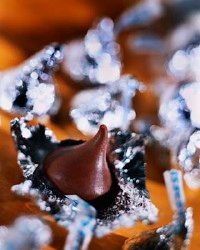The history of chocolate is a rich one. From its earliest cultivation in ancient Mexico and Central America, through its journeys across the Atlantic, to the present, chocolate has been treasured commodity.
Yet for most of that history, chocolate did not resemble the smooth, sweet confection cherished today. And the roles it played in bygone days -- from nourishing beverage and sacred liquid to status symbol, money, and medicine -- gave it an importance that far surpasses its status among even the most devoted modern "chocoholics."
Advertisement
Chocolate is made from the seeds of the fruit of the cacao tree. The seemingly inedible, almond-size seeds, which are surrounded by sweet, tangy pulp, develop inside seed pods. The seed pods resemble footballs and grow out from the tree's trunk. The cacao tree is native to the tropical rainforests of Mesoamerica -- the ancient region that covered the southern and eastern portions of Mexico, Guatemala, Belize, and parts of El Salvador and Honduras. The area was home to numerous, remarkably advanced civilizations prior to its conquest by Europeans.
No one knows for sure which of the Mesoamericans first came up with the idea of using cacao seeds to produce something edible. No decipherable written records exist from the earliest groups in the region. Evidence does show that the Maya, whose culture was at its heyday from a.d. 250 to 900 (referred to as the Classic Maya period), typically used cacao seeds to make a thick, bitter chocolate beverage. It is the Maya, therefore, who often get credit as the inventors of chocolate.
Yet some experts suspect that chocolate-drinking actually originated far earlier, around 1000 b.c., probably with the Olmec, who dominated the muggy lowlands of Mexico's Gulf Coast from about 1500 to 400 b.c. (The Gulf Coast forests provide ideal habitat for the cacao tree, which requires consistently warm temperatures, high humidity, and plenty of rain.) Indeed, cacao, the Mayan name for the tree and for chocolate, likely comes from the word kakawa, which was the name of the tree in the language spoken by the Olmec.
Whether it was the Olmec or the Maya who first discovered chocolate, however, it is the evidence from the Mayan civilization (and from the Aztecs who followed) that provides insight into how chocolate was gathered, made, and used and how highly it was valued in Mesoamerica.
Keep reading to learn more about the Mayans and how they used chocolate.
